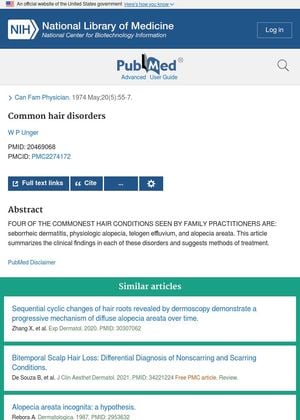Common Hair Disorders
May 1974
in “
PubMed
”

TLDR The article described symptoms and treatments for four common hair problems but didn't give detailed information.
In 1974, the article "Common hair disorders" discussed four prevalent hair conditions seen by family practitioners: seborrheic dermatitis, physiologic alopecia, telogen effluvium, and alopecia areata. The article summarized the clinical findings for each of these disorders and suggested treatment methods. However, the document did not provide specific details about these findings or treatments.






